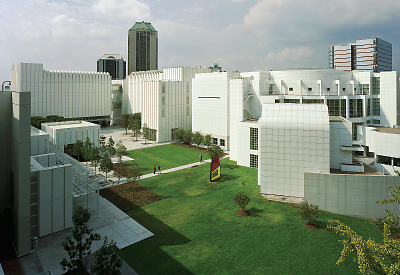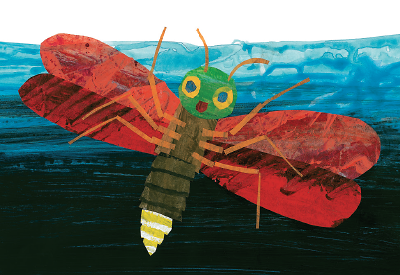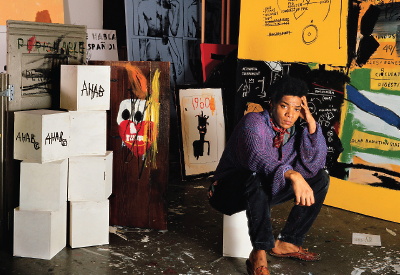High Museum Shows Work From New York Streets to Children’s Books
Abstract
Atlanta’s High Museum of Art holds a wide-ranging collection of work from Europe, America, and Africa in buildings that are considered works of art themselves.
With more than 15,000 works of art in its permanent collection as well as an increasing number of modern and contemporary works, the High Museum of Art in Atlanta is considered the leading art institution in the Southeastern United States. During APA’s Annual Meeting, the museum will feature several highly diverse special exhibits, including works by a New York graffiti artist who died too young, a Brazilian photographer, and a beloved children’s book writer and illustrator.

The High Museum of Art in Atlanta comprises four dramatic buildings by major architects.
The High Museum’s origins go back to 1905, but its main building opened in 1983, designed by renowned architect Richard Meier. The museum was named one of the 10 best works of American architecture of the 1980s by the American Institute of Architects.
“Light, whether direct or filtered, is a constant preoccupation throughout; apart from its functional aspect, light is a symbol of the museum’s role as a place of aesthetic illumination and enlightened cultural values,” Meier wrote of the High on his website.
In 2005, the High Museum completed a major expansion, doubling in size with three new buildings designed by the Italian architect Renzo Piano.
The museum features significant holdings in 19th- and 20th-century American art, European paintings and decorative art, and burgeoning collections of African, folk, and modern and contemporary art.

Jean-Michel Basquiat died young but left behind a legacy of paintings whose genesis can be seen in the sample of notebook pages that reveal the processes that led to his completed works.
The European collection includes works by Italian artists Giovanni Bellini and Giovanni Battista Tiepolo as well as French paintings by such masters as Claude Monet, Camille Pissarro, Paul Gauguin, and Jean-Baptiste Camille Corot.
The African art collection encompasses sculptures from west and central Africa created between 1850 and 1950, and recent acquisitions of Yoruba works in various media, including masks, figurative sculpture, and beadwork.
The museum’s collection of more than 4,500 photographic prints include images by such masters as Paul Strand, Edward Steichen, Harry Callahan, Julia Margaret Cameron, Walker Evans, Emmet Gowin, Clarence John Laughlin, Gordon Parks, Sally Mann, Susan Meiselas, Richard Misrach, Dorothea Lange, and Edward Weston.
Several exhibitions will be held at the High Museum of Art during APA’s Annual Meeting:
“What Is Near: Reflections on Home”: The High has taken a special interest in photography connected to the South, from photojournalism of the civil rights movement to more conceptual contemporary work. “What Is Near” examines the ways that artists have explored identity and other issues in the context of home. According to the High website, “Each series translates a particular location or experience into one that is universal through the act of taking a photograph, and each photograph carries the weight of representing a life lived.”
Vik Muniz: The Brazilian conceptual photographer Vik Muniz creates “photographic delusions,” carefully designed images that incorporate anything from magazine clippings to tomato sauce to electron microscopy of microorganisms—all employed to tantalize the observer’s sense of perception.

Jean-Michel Basquiat died young but left behind a legacy of paintings whose genesis can be seen in the sample of notebook pages that reveal the processes that led to his completed works.
“Basquiat: The Unknown Notebooks”: The late New York graffiti artist Jean-Michel Basquiat (1960–1988) sketched and scribbled over 160 notebook pages between 1980 and 1987 to develop the visual ideas that later appeared in full-scale works.
“The notebook writings range from extended narrative poems and wordplay to observations of New York’s street life,” states the exhibition notes. “As in his paintings, fragments of found texts appear throughout the notebooks, incorporating street signage, news stories, and references from literature and the Old Testament.” The notebooks are accompanied by 30 later works by Basquiat so visitors can see how his art evolved.
Eric Carle: Perhaps more familiar to Annual Meeting attendees with children is the work of Eric Carle, the 82-year-old author and illustrator of The Very Hungry Caterpillar, The Very Quiet Cricket, and other classics.
This retrospective will feature more than 80 of Carle’s signature collages from 15 of his most popular books. Visitors have the chance to see the fine details and intricate patterns that emerge from Carle’s technique of layering tissue paper painted with acrylics. A tour through the Carle exhibit should awaken familiar memories among children and former children alike. ■
The High Museum of Art is located at 1280 Peachtree Street, N.E. For more information, including hours, admission prices, and exhibit details, visit their website.



